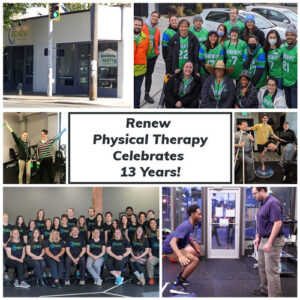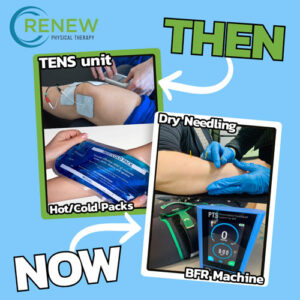
At Renew Physical Therapy, we strive to provide holistic care that addresses not just the physical body but the whole person. In collaboration with Saumya, a somatic healer and owner of Seed Yoga Therapy, we are excited to share insights on how somatic healing can complement traditional physical therapy.
What is Somatic Healing?
Somatic healing is a therapeutic approach that integrates the mind and body, recognizing that emotional and physical experiences are deeply interconnected. Unlike traditional therapies that may focus solely on thoughts, emotions, or the physical body, somatic healing works directly with the body’s sensations, energy, and emotions. It is a holistic practice that honors the body’s wisdom, acknowledging that healing often requires addressing the emotional impact of physical injuries.
Integrating Somatic Healing into Physical Therapy
Physical therapists are often the first healthcare professionals patients consult when experiencing pain or injury. As physical therapists, we are trained to screen for non-musculoskeletal causes of symptoms and coordinate care with other providers. Integrating somatic healing into physical therapy allows us to address both the mechanical and emotional aspects of pain. For example, when a patient’s chronic pain is tied to emotional stress, a physical therapist can tailor sessions to incorporate relaxation techniques, breathing exercises, or even create a calming environment to help alleviate symptoms.
Benefits of Combining Somatic Healing with Physical Therapy
Injuries are rarely just physical—they often come with emotional and psychological challenges. For instance, someone recovering from a car accident may experience fear and anxiety that physical therapy alone may not fully address. By combining somatic healing with physical therapy, we can support the patient in processing these emotional impacts, leading to more comprehensive and lasting healing.
Addressing Chronic Pain and Trauma-Related Conditions
Chronic pain and trauma can cause the nervous system to get stuck in a state of constant arousal, leading to ongoing pain and discomfort. Somatic healing addresses this by helping the body release tension and fear, reducing pain, and promoting a sense of safety within the body. This approach can be particularly beneficial for patients dealing with trauma-related conditions, where the emotional and physical aspects of their experience are closely linked.
What to Expect from a Somatic Healing Session
While somatic healing and physical therapy sessions are typically conducted separately, communication between the physical therapist and somatic healer is key. This collaboration ensures that both practitioners are aligned in their approach, creating a cohesive treatment plan that supports the patient’s overall well-being.
Advice for Physical Therapists Interested in Somatic Healing
If you are a physical therapist interested in incorporating somatic healing into your practice, it is essential to experience it for yourself. Engaging in your own somatic healing journey can deepen your understanding and enhance your ability to support your patients. The more we heal ourselves, the more effective we become in holding space for others’ healing.
Collaborating for Holistic Patient Care
Saumya often collaborates with physical therapists to create integrated treatment plans. When a patient presents with pain, she may refer them to a physical therapist for a thorough musculoskeletal assessment, ensuring no underlying issues are missed. By sharing observations and progress, both the somatic healer and physical therapist can support the patient in a truly holistic manner. This team approach is especially valuable when dealing with complex cases involving trauma or chronic conditions, as it addresses the patient’s needs on all levels—physical, emotional, and energetic.
At Renew PT, we believe in the power of collaboration to enhance patient outcomes. By integrating somatic healing with our physical therapy treatments, we aim to provide a more comprehensive approach to healing that addresses the whole person.







